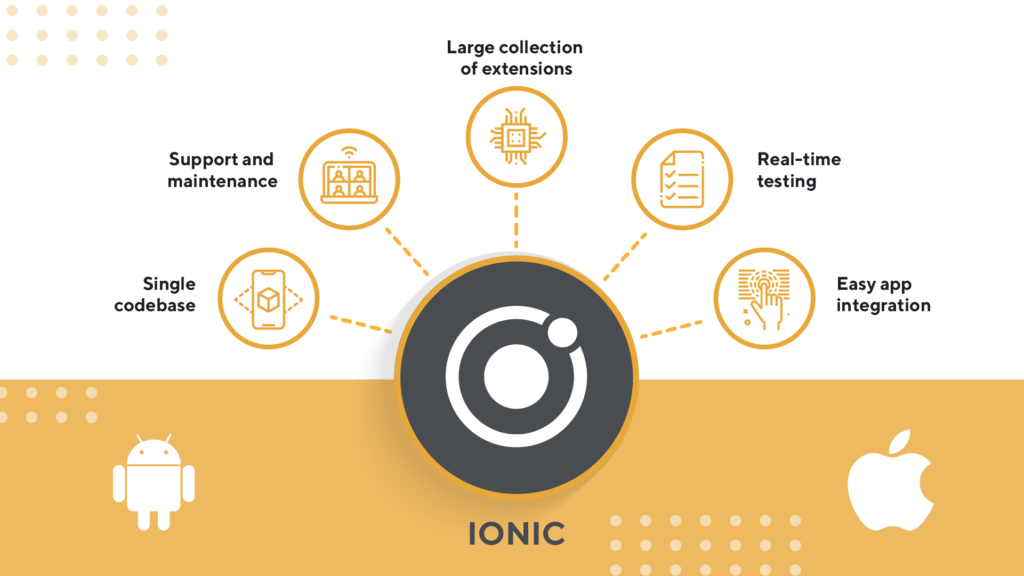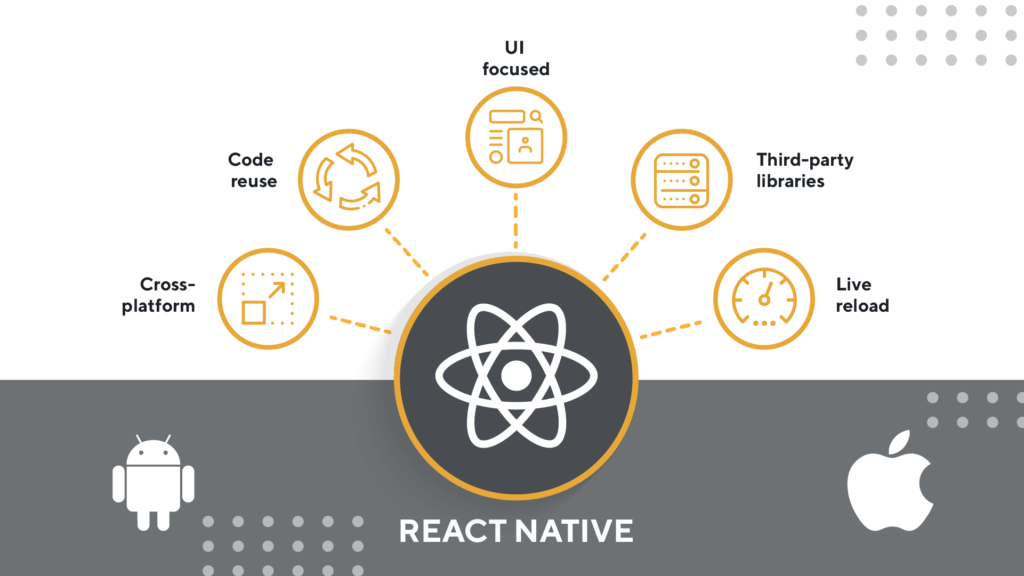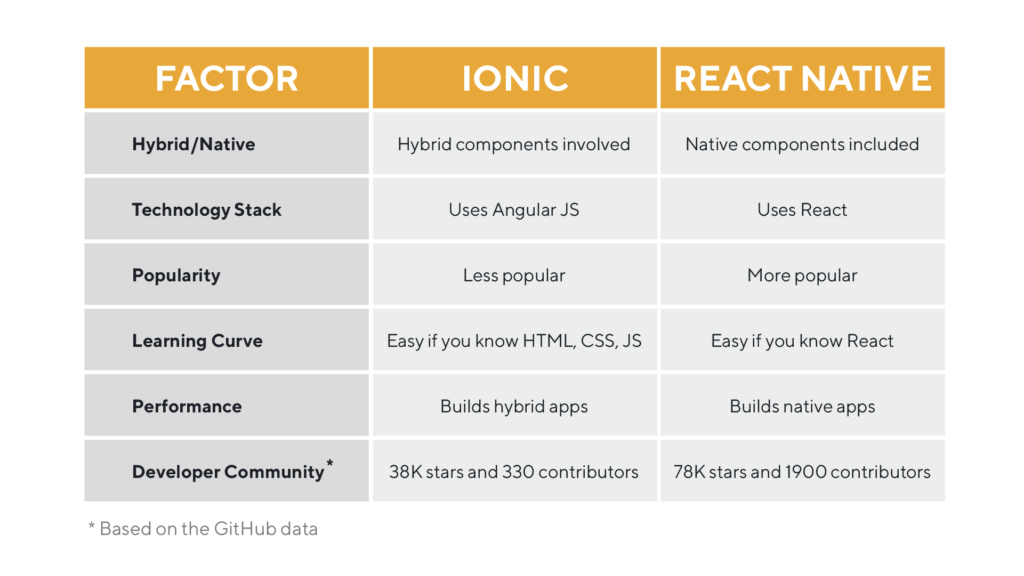When getting an app developed, one of the most important choices in the early-stages is the coding language and platform it’s built on. Apps always start as ideas. Blank canvases for businesses to offer a range of solutions and features that customers want and need. One of those choices for the coding language is between Ionic and React Native.
For many businesses, whether B2C or B2B, or two-sided marketplaces, apps play a crucial role in providing and delivering products or services to customers. Growth and achieving the goals and company outlines can be helped or hindered depending on the quality and outcomes of the app development process.
And this starts with selecting the right coding language and platform for the development process. Two of those choices are amongst some of the most popular ones on the market: Ionic and React Native. In this article, we look at both of them and make a comparison, from a business and technical perspective.
What is Ionic?
Ionic is a hybrid mobile development framework, which employs PhoneGap/Cordova to replace and replicate native features. Ionic is designed to be cross-platform, which means it works equally well on the web, Android and iOS. Web development agencies write the same code-base and then this is shared across every platform.
It’s known ‘the successor to ngCordova’, encompassing a large collection of AngularJS extensions, most of which are built incorporating the Cordova API. Although developers in the community say this framework ‘will not make your app native’, Ionic will get you as close as possible.
Ionic makes it easy to create and launch an app regardless of the intended platform, which means you can develop one app and publish in more than one app store. For those curious about the language stack behind Ionic, it’s based on Angular, a JavaScript framework. Within this, it employs HTML templates. Logic and views are separate when apps are developed using Ionic. Equally useful from a development perspective is that real-time testing is built into this framework.

Picture 1. What is Ionic.
What is React Native?
React Native on the other hand is an open-source web development framework, first launched by Facebook in 2015. It has gained massive popularity amongst web and app developers and software engineers ever since.
React Native is coded in JavaScript, using one of the most popular JavaScript frameworks, React. Which means you don’t need to develop apps for specific platforms (particularly iOS and Android), as the code-base is cross-platform.
However, one of the advantages is all of the widgets and underlying components are native. It means that apps benefit from more of a seamless experience. So when an app is developed for iOS or Android, although the code-base is cross-platform, numerous individual components and widgets are native and integrate in the same way as a native app with the hardware and operating system.

Picture 2. What is React Native.
Best choice for app development: Ionic vs. React Native
Although Ionic is a popular hybrid mobile development framework, many web developers and therefore development agencies have a preference for React Native. One of the main reasons is the truly native element of React Native.
When it comes to developing apps that give the user-experience customers expect, React Native has the advantage. Widgets and features within apps being developed are ‘native’ in the true sense of the word. Better for end-users and the experience of using an app, regardless of the platform it’s being developed for.
Ionic is cross-platform, which means the same code can create and launch apps for the web, Android and iOS. However, features and widgets that need to access native hardware and apps use Cordova plugins to integrate native features.
Ionic does give apps a native ‘feel’, but not native in the true sense of the word. Graphic elements in Ionic are rendered through a browser, which can be complicated to set up, and in some cases, depending on the elements themselves, reduces an app’s loading and response speeds. It’s best avoiding that if possible as
Whereas, React Native combines the best of both: native and cross-platform. For businesses this not only saves time and money, but it ensures the outcome — the app being developed — is as close to being a native application as possible. Getting an app developed for one platform and then another separately is usually twice as expensive and more time-consuming than using a cross-platform framework, such as React Native.

Picture 3. Benefits of React Native and Ionic.
Key Takeaways: Ionic vs. React Native
- Both React Native and Ionic are popular cross-platform frameworks, which means the same code-base is used to develop and launch apps for iOS, Android and the web.
- Ionic uses Cordova plugins to integrate native features and renders graphic elements through a web browser.
- React Native on the other hand has all of the advantages of a cross-platform app, while also ensuring that widgets and features are native in the true sense of the word. Giving businesses and therefore users an altogether better experience.
Overall, there are more advantages to having an app built using the React Native framework. It saves companies time and money, and produces an outcome that can be more effectively used to drive forward growth.
LaSoft: Your web and mobile development agency. We are a technology partner you can trust. Get more information today. LaSoft provides a wide range of services, including web and mobile development, product design, management and quality assurance.


